实例介绍
【实例简介】汽车行业规范EN50128-2011
这个规范是汽车行业欧洲软件标准
【实例截图】
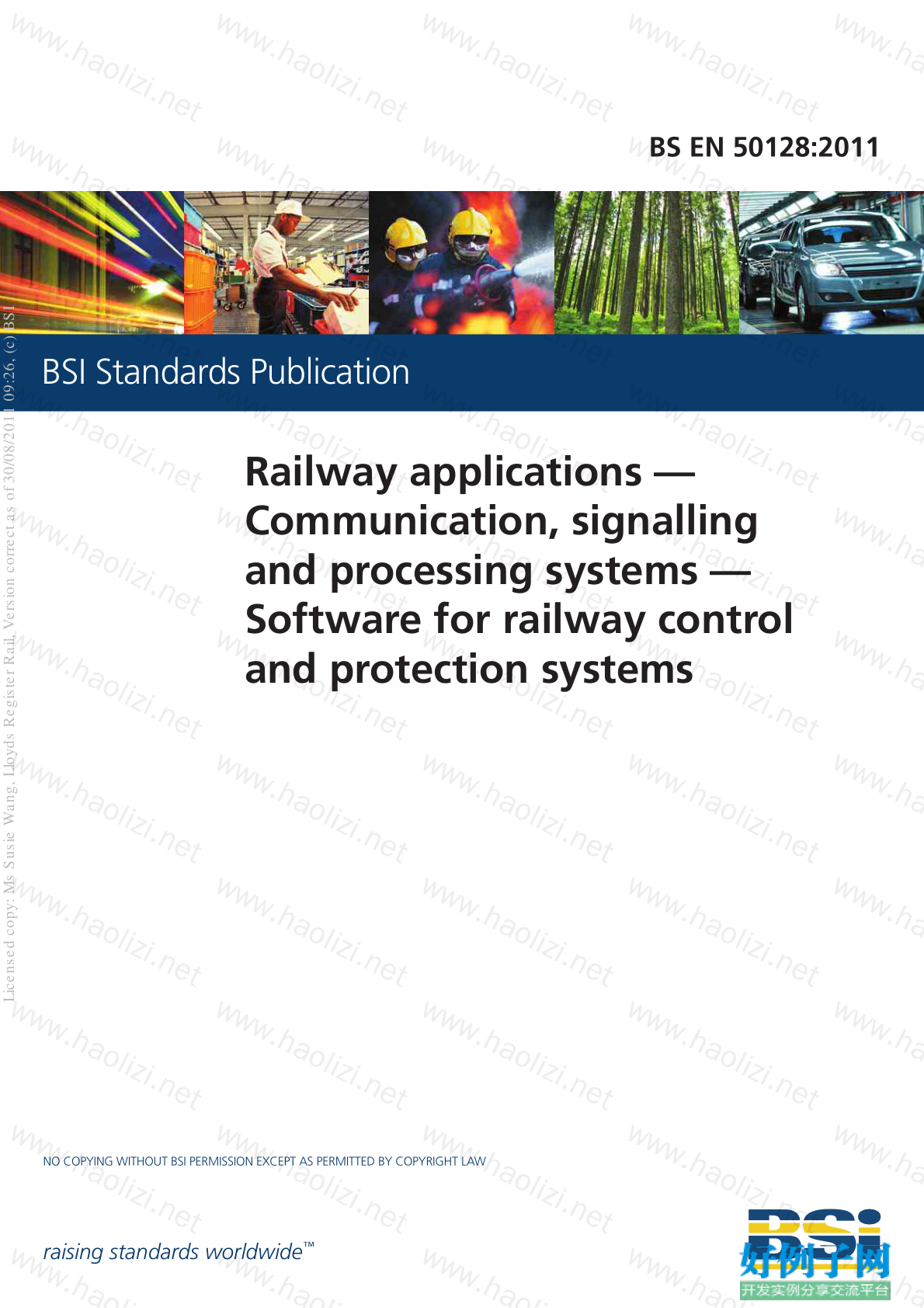
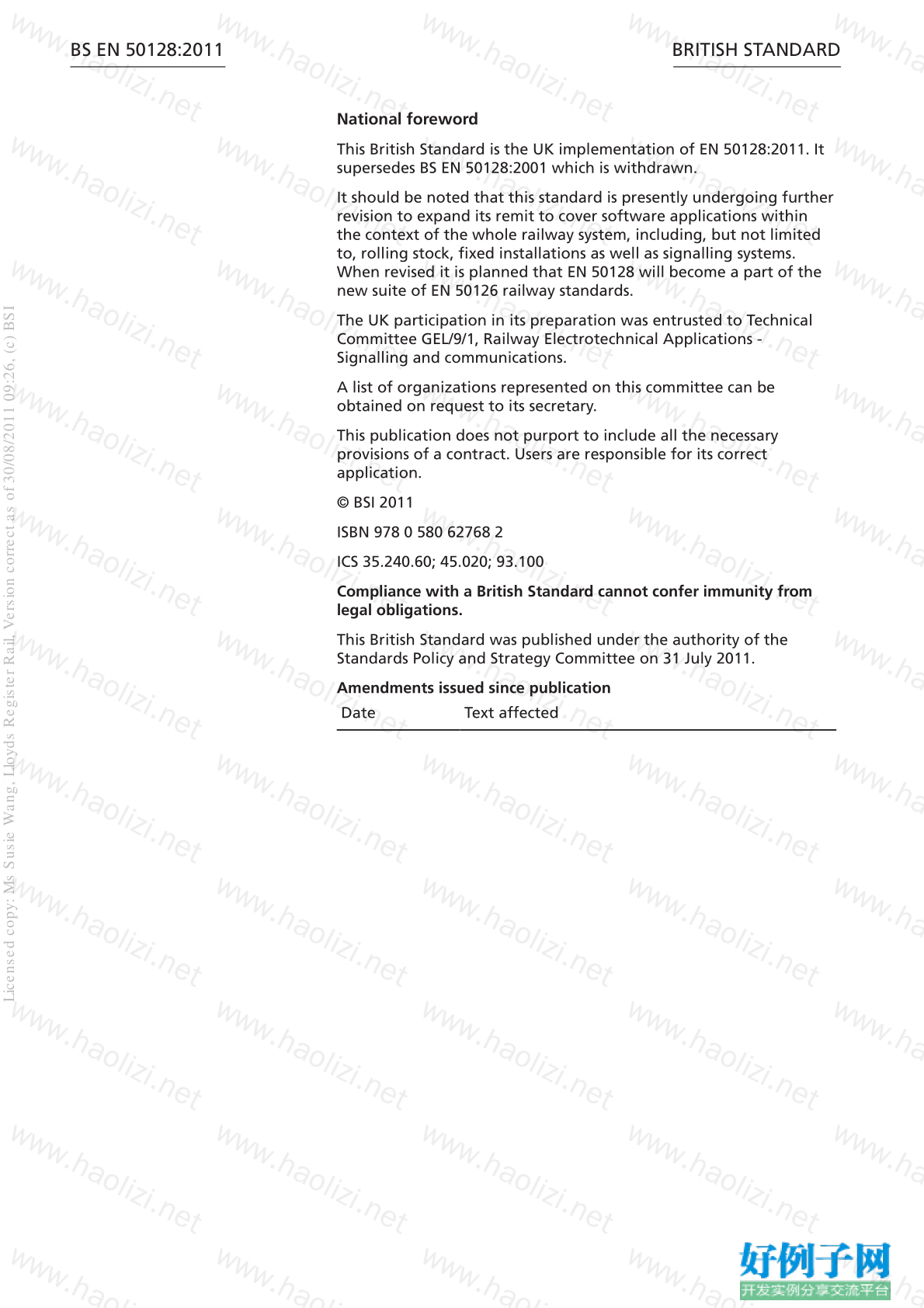


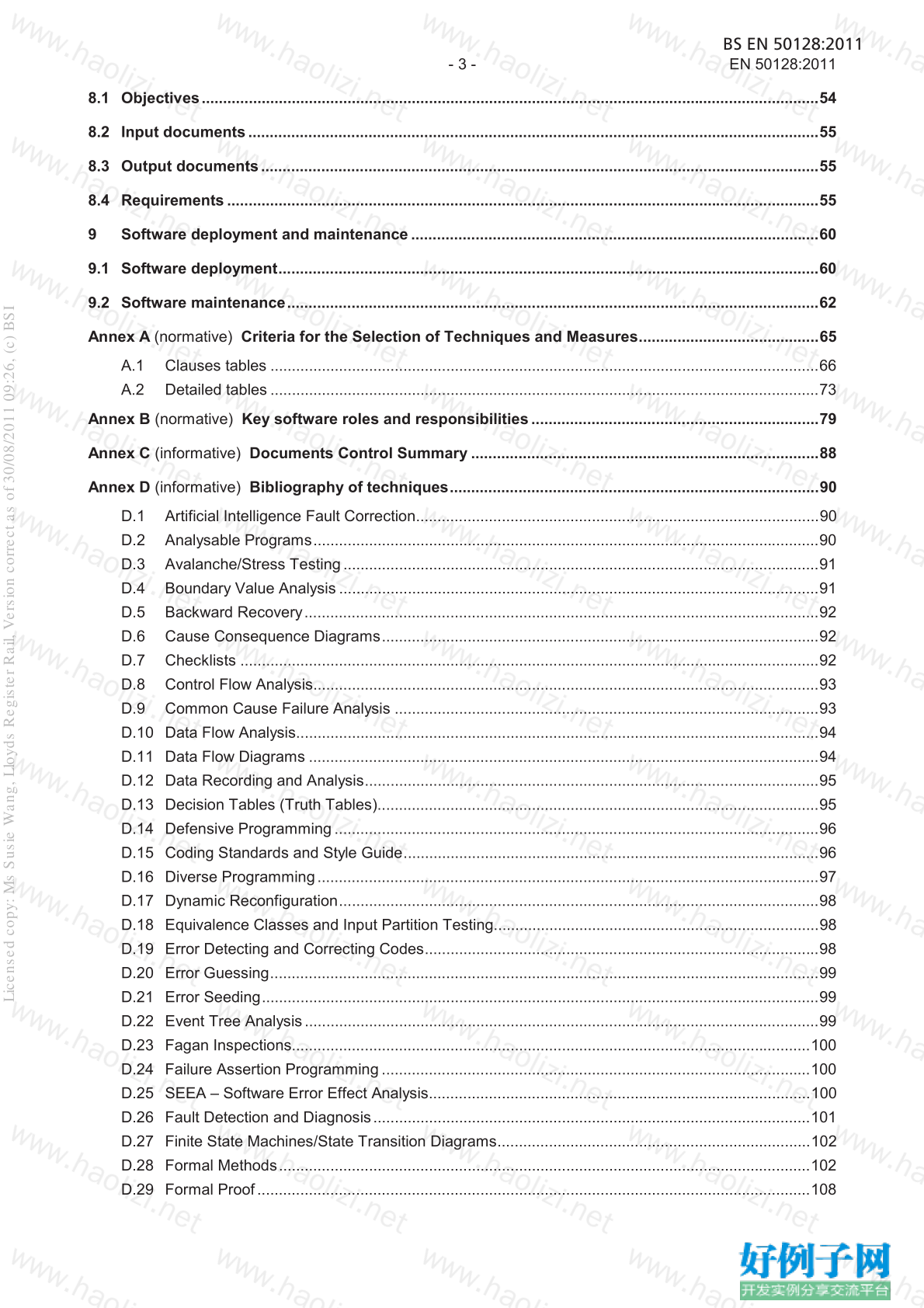

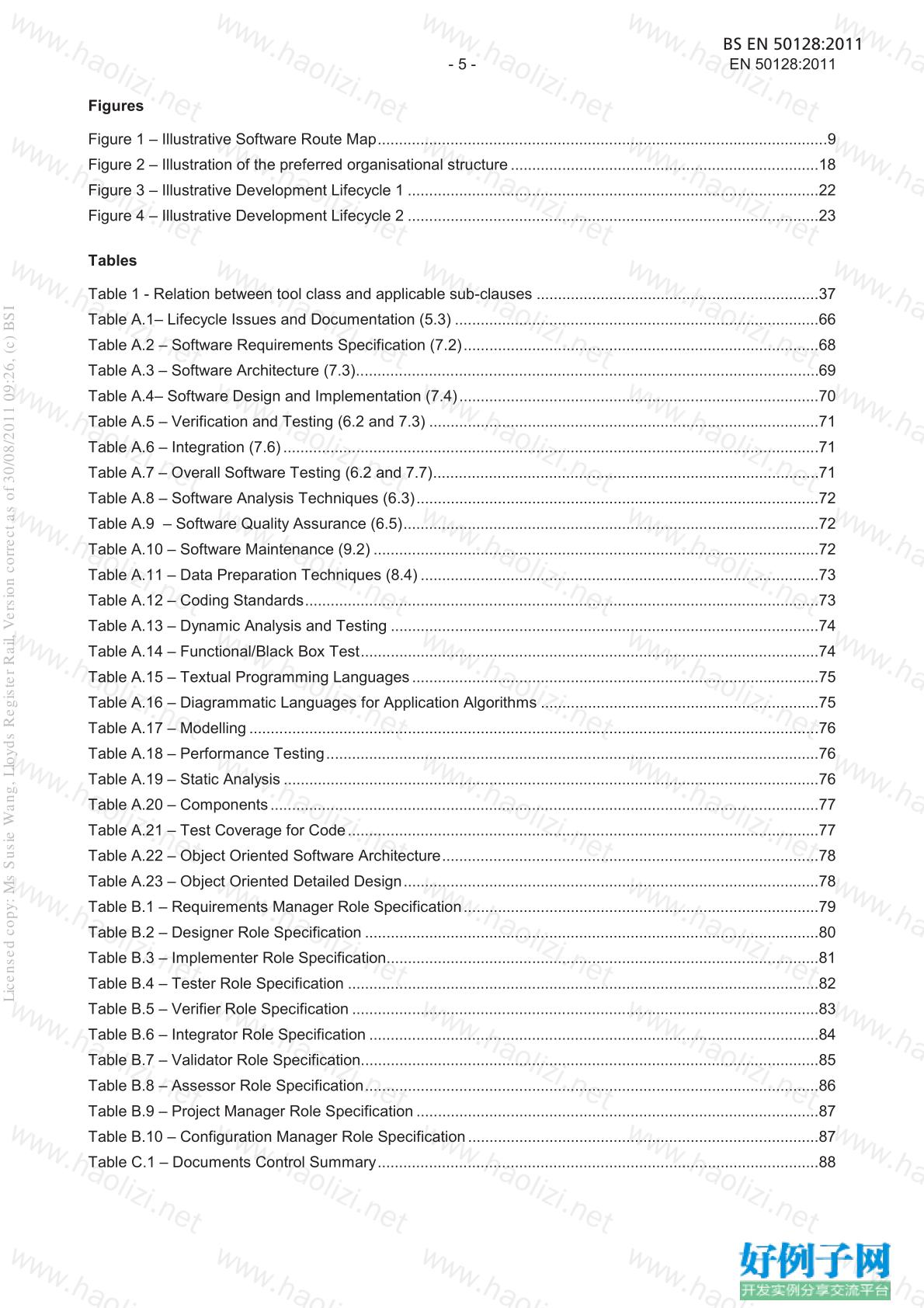
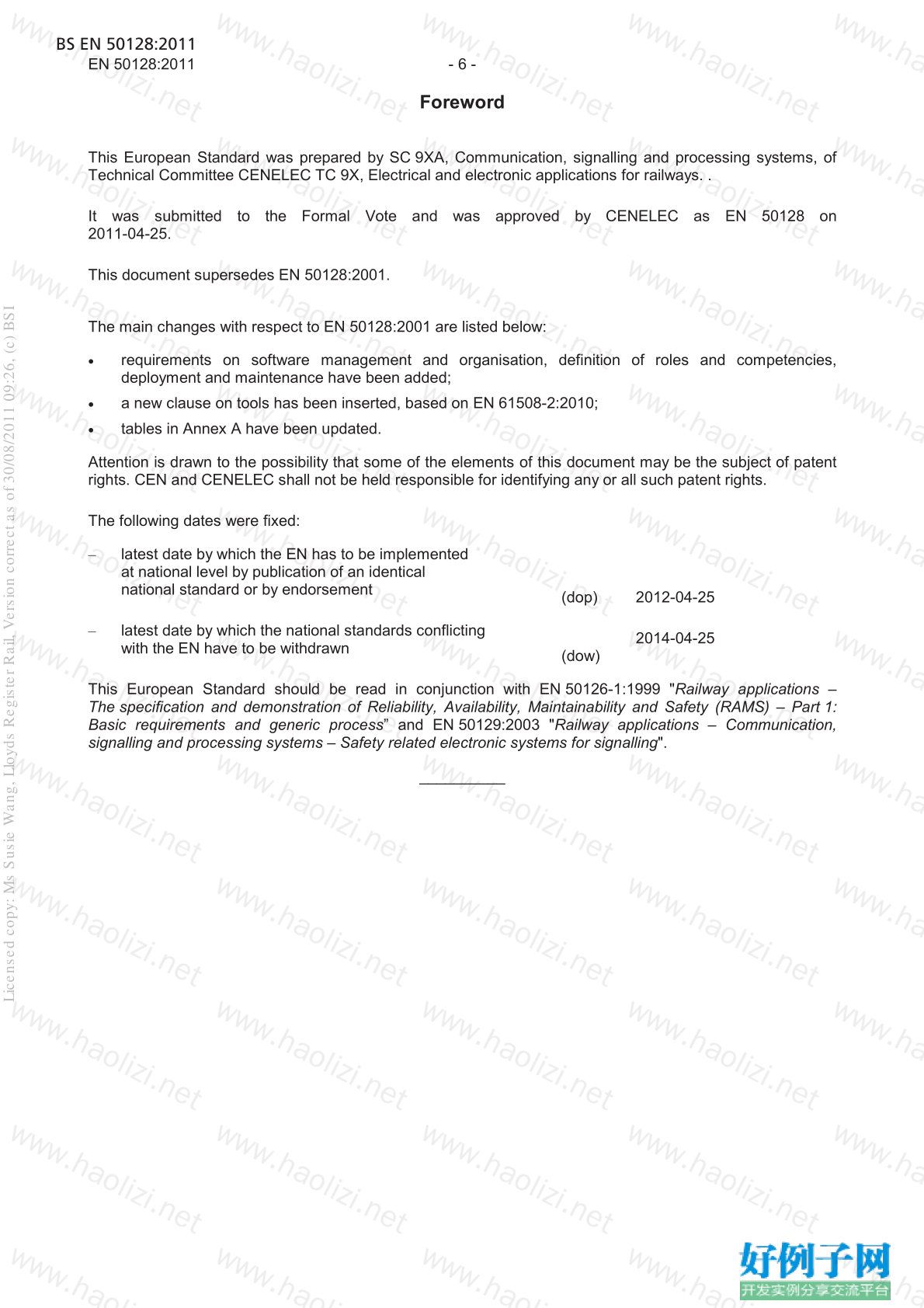
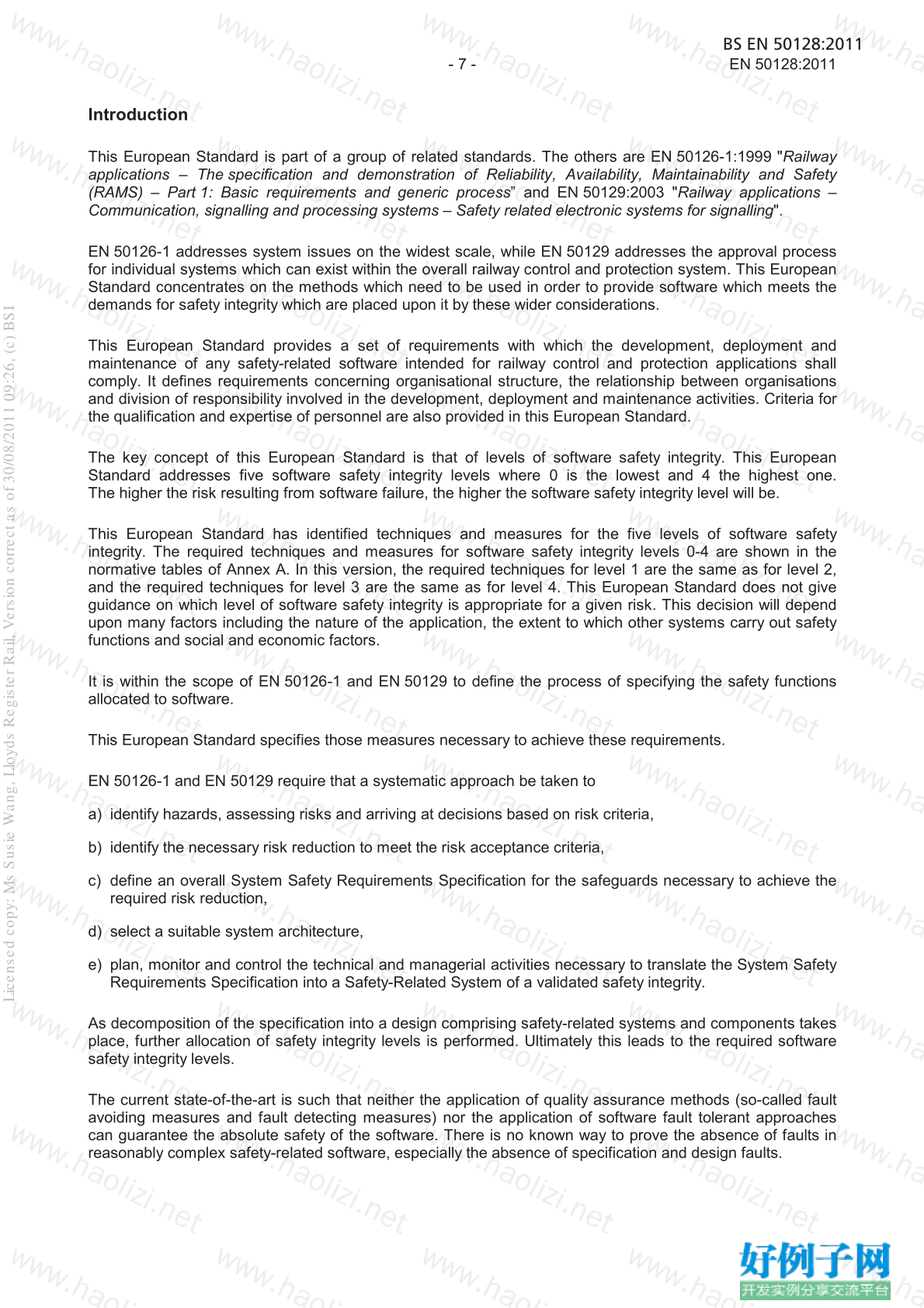

【核心代码】
Contents
Foreword ........................................................................................................................................................... 6
Introduction ....................................................................................................................................................... 7 �
1 � Scope ....................................................................................................................................................... 10 �
2 � Normative references ............................................................................................................................. 11 �
3 � Terms, definitions and abbreviations ................................................................................................... 11 �
3.1 � Terms and definitions ............................................................................................................................. 11 �
3.2 � Abbreviations .......................................................................................................................................... 15 �
4 � Objectives, conformance and software safety integrity levels .......................................................... 16 �
5 � Software management and organisation.............................................................................................. 17 �
5.1 � Organisation, roles and responsibilities .............................................................................................. 17 �
5.2 � Personnel competence ........................................................................................................................... 20 �
5.3 � Lifecycle issues and documentation .................................................................................................... 21 �
6 � Software assurance ................................................................................................................................ 23 �
6.1 � Software testing ...................................................................................................................................... 23 �
6.2 � Software verification ............................................................................................................................... 25 �
6.3 � Software validation ................................................................................................................................. 27 �
6.4 � Software assessment ............................................................................................................................. 28 �
6.5 � Software quality assurance.................................................................................................................... 30 �
6.6 � Modification and change control........................................................................................................... 33 �
6.7 � Support tools and languages ................................................................................................................ 34 �
7 � Generic software development .............................................................................................................. 37 �
7.1 � Lifecycle and documentation for generic software ............................................................................. 37 �
7.2 � Software requirements ........................................................................................................................... 37 �
7.3 � Architecture and Design ......................................................................................................................... 40 �
7.4 � Component design ................................................................................................................................. 46 �
7.5 � Component implementation and testing .............................................................................................. 49 �
7.6 � Integration ................................................................................................................................................ 50 �
7.7 � Overall Software Testing / Final Validation .......................................................................................... 52 �
8 � Development of application data or algorithms: systems configured by application data or
algorithms ................................................................................................................................................ 54 �
Licensed copy: Ms Susie Wang, Lloyds Register Rail, Version correct as of 30/08/2011 09:26, (c) BSI
BS EN 50128:2011
- 3 - EN 50128:2011
8.1 � Objectives ................................................................................................................................................ 54 �
8.2 � Input documents ..................................................................................................................................... 55 �
8.3 � Output documents .................................................................................................................................. 55 �
8.4 � Requirements .......................................................................................................................................... 55 �
9 � Software deployment and maintenance ............................................................................................... 60 �
9.1 � Software deployment .............................................................................................................................. 60 �
9.2 � Software maintenance ............................................................................................................................ 62 �
Annex A (normative) Criteria for the Selection of Techniques and Measures .......................................... 65 �
A.1 � Clauses tables ................................................................................................................................ 66 �
A.2 � Detailed tables ................................................................................................................................ 73 �
Annex B (normative) Key software roles and responsibilities ................................................................... 79 �
Annex C (informative) Documents Control Summary ................................................................................. 88 �
Annex D (informative) Bibliography of techniques ...................................................................................... 90 �
D.1 � Artificial Intelligence Fault Correction .............................................................................................. 90 �
D.2 � Analysable Programs ...................................................................................................................... 90 �
D.3 � Avalanche/Stress Testing ............................................................................................................... 91 �
D.4 � Boundary Value Analysis ................................................................................................................ 91 �
D.5 � Backward Recovery ........................................................................................................................ 92 �
D.6 � Cause Consequence Diagrams ...................................................................................................... 92 �
D.7 � Checklists ....................................................................................................................................... 92 �
D.8 � Control Flow Analysis...................................................................................................................... 93 �
D.9 � Common Cause Failure Analysis ................................................................................................... 93 �
D.10 � Data Flow Analysis.......................................................................................................................... 94 �
D.11 � Data Flow Diagrams ....................................................................................................................... 94 �
D.12 � Data Recording and Analysis .......................................................................................................... 95 �
D.13 � Decision Tables (Truth Tables)....................................................................................................... 95 �
D.14 � Defensive Programming ................................................................................................................. 96 �
D.15 � Coding Standards and Style Guide ................................................................................................. 96 �
D.16 � Diverse Programming ..................................................................................................................... 97 �
D.17 � Dynamic Reconfiguration ................................................................................................................ 98 �
D.18 � Equivalence Classes and Input Partition Testing............................................................................ 98 �
D.19 � Error Detecting and Correcting Codes ............................................................................................ 98 �
D.20 � Error Guessing ................................................................................................................................ 99 �
D.21 � Error Seeding .................................................................................................................................. 99 �
D.22 � Event Tree Analysis ........................................................................................................................ 99 �
D.23 � Fagan Inspections......................................................................................................................... 100 �
D.24 � Failure Assertion Programming .................................................................................................... 100 �
D.25 � SEEA – Software Error Effect Analysis ......................................................................................... 100 �
D.26 � Fault Detection and Diagnosis ...................................................................................................... 101 �
D.27 � Finite State Machines/State Transition Diagrams ......................................................................... 102 �
D.28 � Formal Methods ............................................................................................................................ 102 �
D.29 � Formal Proof ................................................................................................................................. 108 �
Licensed copy: Ms Susie Wang, Lloyds Register Rail, Version correct as of 30/08/2011 09:26, (c) BSI
BS EN 50128:2011
EN 50128:2011 - 4 -
D.30 � Forward Recovery ......................................................................................................................... 108 �
D.31 � Graceful Degradation .................................................................................................................... 108 �
D.32 � Impact Analysis ............................................................................................................................. 109 �
D.33 � Information Hiding / Encapsulation ............................................................................................... 109 �
D.34 � Interface Testing ........................................................................................................................... 110 �
D.35 � Language Subset .......................................................................................................................... 110 �
D.36 � Memorising Executed Cases ........................................................................................................ 110 �
D.37 � Metrics .......................................................................................................................................... 111 �
D.38 � Modular Approach ......................................................................................................................... 111 �
D.39 � Performance Modelling ................................................................................................................. 112 �
D.40 � Performance Requirements .......................................................................................................... 112 �
D.41 � Probabilistic Testing ...................................................................................................................... 113 �
D.42 � Process Simulation ....................................................................................................................... 113 �
D.43 � Prototyping / Animation ................................................................................................................. 114 �
D.44 � Recovery Block ............................................................................................................................. 114 �
D.45 � Response Timing and Memory Constraints .................................................................................. 114 �
D.46 � Re-Try Fault Recovery Mechanisms............................................................................................. 115 �
D.47 � Safety Bag .................................................................................................................................... 115 �
D.48 � Software Configuration Management ........................................................................................... 115 �
D.49 � Strongly Typed Programming Languages .................................................................................... 115 �
D.50 � Structure Based Testing ............................................................................................................... 116 �
D.51 � Structure Diagrams ....................................................................................................................... 116 �
D.52 � Structured Methodology ................................................................................................................ 117 �
D.53 � Structured Programming ............................................................................................................... 117 �
D.54 � Suitable Programming languages ................................................................................................. 118 �
D.55 � Time Petri Nets ............................................................................................................................. 119 �
D.56 � Walkthroughs / Design Reviews ................................................................................................... 119 �
D.57 � Object Oriented Programming ...................................................................................................... 119 �
D.58 � Traceability .................................................................................................................................... 120 �
D.59 � Metaprogramming ......................................................................................................................... 121 �
D.60 � Procedural programming .............................................................................................................. 121 �
D.61 � Sequential Function Charts ........................................................................................................... 121 �
D.62 � Ladder Diagram ............................................................................................................................ 122 �
D.63 � Functional Block Diagram ............................................................................................................. 122 �
D.64 � State Chart or State Diagram ....................................................................................................... 122 �
D.65 � Data modelling .............................................................................................................................. 122 �
D.66 � Control Flow Diagram/Control Flow Graph ................................................................................... 123 �
D.67 � Sequence diagram ........................................................................................................................ 124 �
D.68 � Tabular Specification Methods ..................................................................................................... 124 �
D.69 � Application specific language ........................................................................................................ 124 �
D.70 � UML (Unified Modeling Language) ............................................................................................... 125 �
D.71 � Domain specific languages ........................................................................................................... 126 �
Bibliography .................................................................................................................................................. 127 �
Licensed copy: Ms Susie Wang, Lloyds Register Rail, Version correct as of 30/08/2011 09:26, (c) BSI
BS EN 50128:2011
- 5 - EN 50128:2011
Figures
Figure 1 – Illustrative Software Route Map ......................................................................................................... 9 �
Figure 2 – Illustration of the preferred organisational structure ........................................................................ 18 �
Figure 3 – Illustrative Development Lifecycle 1 ................................................................................................ 22 �
Figure 4 – Illustrative Development Lifecycle 2 ................................................................................................ 23 �
Tables
Table 1 - Relation between tool class and applicable sub-clauses .................................................................. 37 �
Table A.1– Lifecycle Issues and Documentation (5.3) ..................................................................................... 66 �
Table A.2 – Software Requirements Specification (7.2) ................................................................................... 68 �
Table A.3 – Software Architecture (7.3) ............................................................................................................ 69 �
Table A.4– Software Design and Implementation (7.4) .................................................................................... 70 �
Table A.5 – Verification and Testing (6.2 and 7.3) ........................................................................................... 71 �
Table A.6 – Integration (7.6) ............................................................................................................................. 71 �
Table A.7 – Overall Software Testing (6.2 and 7.7) .......................................................................................... 71 �
Table A.8 – Software Analysis Techniques (6.3) .............................................................................................. 72 �
Table A.9 – Software Quality Assurance (6.5) ................................................................................................. 72 �
Table A.10 – Software Maintenance (9.2) ........................................................................................................ 72 �
Table A.11 – Data Preparation Techniques (8.4) ............................................................................................. 73 �
Table A.12 – Coding Standards ........................................................................................................................ 73 �
Table A.13 – Dynamic Analysis and Testing .................................................................................................... 74 �
Table A.14 – Functional/Black Box Test ........................................................................................................... 74 �
Table A.15 – Textual Programming Languages ............................................................................................... 75 �
Table A.16 – Diagrammatic Languages for Application Algorithms ................................................................. 75 �
Table A.17 – Modelling ..................................................................................................................................... 76 �
Table A.18 – Performance Testing ................................................................................................................... 76 �
Table A.19 – Static Analysis ............................................................................................................................. 76 �
Table A.20 – Components ................................................................................................................................ 77 �
Table A.21 – Test Coverage for Code .............................................................................................................. 77 �
Table A.22 – Object Oriented Software Architecture ........................................................................................ 78 �
Table A.23 – Object Oriented Detailed Design ................................................................................................. 78 �
Table B.1 – Requirements Manager Role Specification ................................................................................... 79 �
Table B.2 – Designer Role Specification .......................................................................................................... 80 �
Table B.3 – Implementer Role Specification..................................................................................................... 81 �
Table B.4 – Tester Role Specification .............................................................................................................. 82 �
Table B.5 – Verifier Role Specification ............................................................................................................. 83 �
Table B.6 – Integrator Role Specification ......................................................................................................... 84 �
Table B.7 – Validator Role Specification........................................................................................................... 85 �
Table B.8 – Assessor Role Specification .......................................................................................................... 86 �
Table B.9 – Project Manager Role Specification .............................................................................................. 87 �
Table B.10 – Configuration Manager Role Specification .................................................................................. 87 �
Table C.1 – Documents Control Summary ....................................................................................................... 88
小贴士
感谢您为本站写下的评论,您的评论对其它用户来说具有重要的参考价值,所以请认真填写。
- 类似“顶”、“沙发”之类没有营养的文字,对勤劳贡献的楼主来说是令人沮丧的反馈信息。
- 相信您也不想看到一排文字/表情墙,所以请不要反馈意义不大的重复字符,也请尽量不要纯表情的回复。
- 提问之前请再仔细看一遍楼主的说明,或许是您遗漏了。
- 请勿到处挖坑绊人、招贴广告。既占空间让人厌烦,又没人会搭理,于人于己都无利。
关于好例子网
本站旨在为广大IT学习爱好者提供一个非营利性互相学习交流分享平台。本站所有资源都可以被免费获取学习研究。本站资源来自网友分享,对搜索内容的合法性不具有预见性、识别性、控制性,仅供学习研究,请务必在下载后24小时内给予删除,不得用于其他任何用途,否则后果自负。基于互联网的特殊性,平台无法对用户传输的作品、信息、内容的权属或合法性、安全性、合规性、真实性、科学性、完整权、有效性等进行实质审查;无论平台是否已进行审查,用户均应自行承担因其传输的作品、信息、内容而可能或已经产生的侵权或权属纠纷等法律责任。本站所有资源不代表本站的观点或立场,基于网友分享,根据中国法律《信息网络传播权保护条例》第二十二与二十三条之规定,若资源存在侵权或相关问题请联系本站客服人员,点此联系我们。关于更多版权及免责申明参见 版权及免责申明



网友评论
我要评论